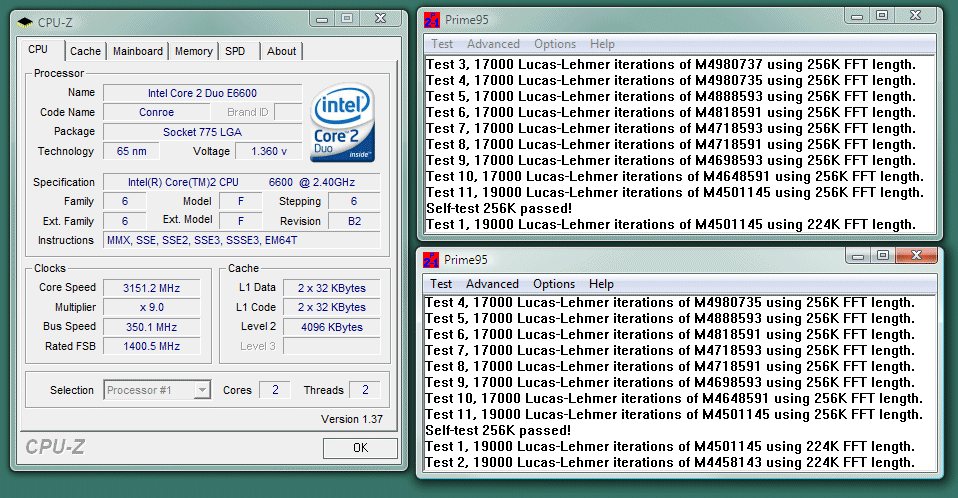Fsb Overclock Program Intel

Why overclock an Intel PC? The hard-core tech addict answers with the classic “because it's there.” While poetic, this doesn’t do much for the IT professional who needs more justification to risk voiding a manufacturer warranty. However, the best business reason for overclocking is that it can make “obsolete” equipment useful again. This equipment is typically already out of warranty, so the risk is often minimal.

For instance, overclocking the low-cost Celeron PCs you bought for backup duty will significantly boost their performance, making them faster and more productive. You can also use overclocking to test the performance of software for future hardware upgrades. To help you take advantage of your older equipment, this Drill Down will focus on why you might want to overclock Intel’s Celeron and P4 processors, and how to do it. Overclock at your own risk Manufacturers may or may not honor the warranty on an overclocked CPU. It may also void the warranty on your motherboard and add-in cards.
As all systems and components are different, neither TechProGuild nor the author can be held responsible for any damage caused by overclocking your computer. This information is presented for educational purposes only. Perform any modifications to your system at your own risk. Processor speed factors Today’s CPUs differ from those of the past in that they include on-board cache memory. Older CPUs, like the original 486 and Pentium, had the majority of their cache memory embedded on the motherboard.
Changing the way the CPU operated rarely affected the operation of the cache on the motherboard. Now, however, all processor caches are attached to the CPU. Even if the processor is able to handle a particular speed, unstable cache memory will feed it corrupt data, rendering the CPU useless. Processor speed is based on two factors. The first is the interface between the motherboard and the Front Side Bus (FSB).
The speed of the FSB reflects the amount of data that can be sent between the CPU and the other devices in the computer. On most motherboards, the FSB also determines the speed of the AGP port, the PCI bus, and the ISA bus. In general, the performance of a computer improves as the FSB speed increases. Intel FSB speed The FSB on Intel processors currently ranges from 400 MHz for Celerons to 533 MHz for the Pentium 4.
Overclocking Software; Computer Tradeshow Reports. Intel FSB overclock. The most recent problem with fixed multiplier is that you have to change the Front. To perform a good overclocking, you need a good motherboard, processor of course and finally enough memory. Intel make use of basebfrequency generated by the chipset of the motherboard, called the FSB for Intel (HTT for AMD ones). Early C2Ds work with a FSB of 266 MHz. This initial frequency is.
These are not straight clock speeds; instead they are quad-clocked speeds. These processors actually transmit data four times per clock cycle, meaning the Celerons are based on a 100-MHz clock (100 MHz x 4 = 400 MHz), while the current Pentium 4 uses a 133-MHz clock (133 x 4 = 533 MHz). There are older Pentium 4s that use the 400-MHz bus, but they are being phased out to help increase performance differences between the new Celerons and the Pentium 4. The other factor controlling a CPU’s speed is the clock multiplier. The clock multiplier defines the ratio of processor speed to the FSB.
Prior to the Pentium II, switches on the motherboard set the clock multiplier of virtually all processors. Dreamcast Isos. Currently, the clock multiplier is locked at the factory.
Intel to unlock the clock multiplier? Intel felt it was necessary to lock the clock multiplier at the factory after having problems with ethically challenged vendors remarking the processors with higher speeds and increasing the price. Home users cried foul, but the corporate world that buys the lion’s share of computers doesn’t overclock and didn’t care.
Amazingly, at the recent Intel Developers Forum, Intel discussed bringing to market an “enthusiast” grade motherboard that would allow overclocking, its first since it started locking clock multipliers. Check your motherboard Before you begin the overclocking process, determine if your motherboard can overclock processors. Look in the CPU installation section in your PC’s manual. If you're lucky, you'll find either a BIOS setup menu or a set of switches or jumpers on the motherboard that control the FSB, voltage, clock, PCI/AGP, and memory bus multipliers. The only real necessity is the FSB adjustment, but without the others, your options decline significantly. Overclocking will require your motherboard to give orders to the CPU.